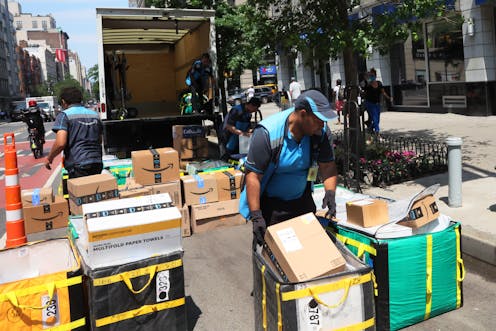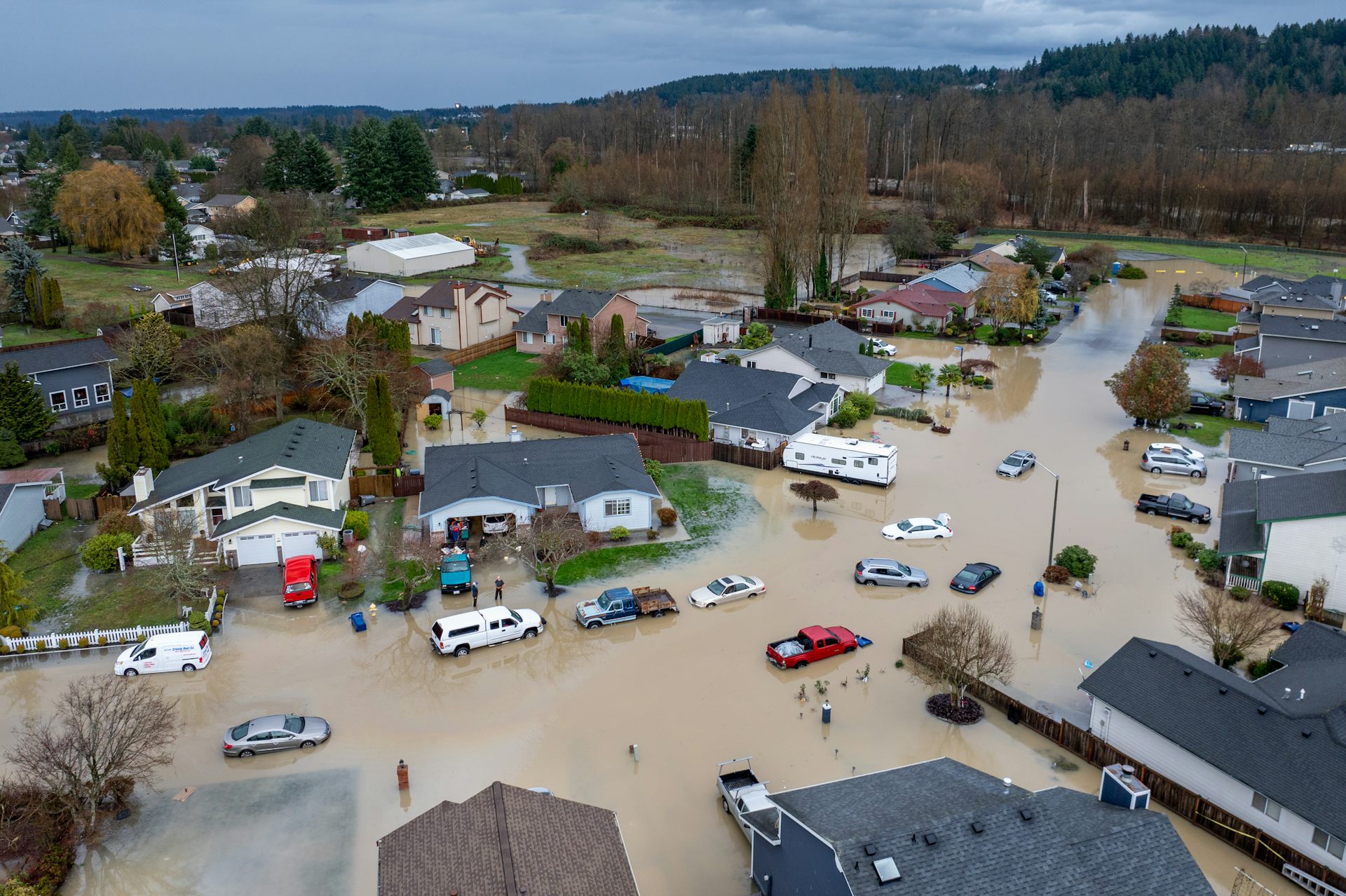How many Amazon packages get delivered each year?
The rise of e-commerce means billions of packages are delivered in the US each year. That creates traffic and pollution, but urban freight researchers are finding better way to get goods to customers.


Curious Kids is a series for children of all ages. If you have a question you’d like an expert to answer, send it to curiouskidsus@theconversation.com.
How many Amazon packages get delivered each year? – Aya K., age 9, Illinois
It’s incredibly convenient to buy something online, right from your computer or phone. Whether it’s a high-end telescope or a resupply of toothpaste, the goods appear right at your doorstep. This kind of shopping is called “e-commerce” and it’s becoming more popular each year. In the U.S., it has grown from a mere 7% of retail purchases in 2012 to 19.6% of retail and US$791.7 billion in sales in 2020.
Amazon’s growing reach
For Amazon, the biggest player in e-commerce, this means delivering lots of packages. In 2021 the company shipped an estimated 7.7 billion packages globally, based on its nearly $470 billion in sales.
If each of these packages were a 1-foot square box and they were stacked on top of one another, the pile would be six times higher than the distance from the Earth to the Moon. Laid end to end, they would wrap around the Earth 62 times.
Back in the early 2010s, most things bought from Amazon.com were shipped using a third-party carrier like FedEx or UPS. In 2014, however, Amazon began delivering packages itself with a service called “Fulfilled by Amazon.” That’s when those signature blue delivery vans started appearing on local streets.
Since then, Amazon’s logistics arm has grown from relying entirely on other carriers to shipping 22% of all packages in the U.S. in 2021. This is greater than FedEx’s 19% market share and within striking distance of UPS’s 24%. Amazon’s multichannel fulfillment service allows other websites to use its warehousing and shipping services. So your order from Etsy or eBay could also be packed and shipped by Amazon.
The supply chain
To handle that many packages, shipping companies need an extensive network of manufacturers, vehicles and warehouses that can coordinate together. This is called the supply chain. If you’ve ever used a tracking number to follow a package, you’ve seen it in action.
People who make decisions about where to send vehicles and how to route packages are constantly trying to keep costs down while still getting packages to customers on time. The supply chain can do this very effectively, but it also has downsides.
More delivery vehicles on the road produce more greenhouse gas emissions that contribute to climate change, along with pollutants like nitrogen oxides and particulate matter that are hazardous to breathe. Traffic congestion is also a major concern in cities as delivery drivers try to find parking on busy streets.
Urban freight solutions
Are there ways to balance the increasing number of deliveries while making freight safe, sustainable and fast? At the University of Washington’s Supply Chain Transportation and Logistics Center, we work with companies like Amazon and UPS and others in the shipping, transportation and real estate sectors to answer questions like this. Here are some solutions for what we and our colleagues call the “last mile” – the last leg of a package’s long journey to your doorstep.
– Electrification: Transitioning from gasoline and diesel vehicles to fleets of electric or other zero-emission vehicles reduces pollution from delivery trucks. Tax credits and local policies, such as creating so-called green loading zones and zero-emission zones for clean vehicles, create incentives for companies to make the switch.
– Common carrier lockers: Buildings can install lockers at central locations, such as busy transit stops, so that drivers can drop off packages without going all the way to your doorstep. When you’re ready to pick up your items, you just stop by at a time that’s convenient for you. This reduces both delivery truck mileage and the risk of packages being stolen off of porches.
– Cargo bicycles: Companies can take the delivery truck out of the equation and use electric cargo bicycles to drop off smaller packages. In addition to being zero-emission, cargo bicycles are relatively inexpensive and easy to park, and they provide a healthier alternative for delivery workers.
To learn more about supply chains and delivery logistics, check with your town or city’s transportation department to see if they are testing or already have goods delivery programs or policies, like those in New York and Seattle. And the next time you order something for delivery, consider your options for receiving it, such as walking or biking to a package locker or pickup point, or consolidating your items into a single delivery.
Package delivery can be both convenient and sustainable if companies keep evolving their supply chains, and everyone thinks about how they want delivery to work in their neighborhoods.
Hello, curious kids! Do you have a question you’d like an expert to answer? Ask an adult to send your question to CuriousKidsUS@theconversation.com. Please tell us your name, age and the city where you live.
And since curiosity has no age limit – adults, let us know what you’re wondering, too. We won’t be able to answer every question, but we will do our best.
The University of Washington's Supply Chain Transportation and Logistics Center receives support from Amazon, UPS and other companies in the transportation, logistics, vehicle manufacture and real estate industries, and from the cities of Seattle and Bellevue.
Rishi Verma does not work for, consult, own shares in or receive funding from any company or organization that would benefit from this article, and has disclosed no relevant affiliations beyond their academic appointment.
Read These Next
West Coast levee failures show growing risks from America’s aging flood defenses
Levees protect more than 7 million buildings in the US today, yet they got a D-plus grade in 2025. A…
LA fires showed how much neighborliness matters for wildfire safety – schools can do much more to te
Managing fire risk is about more than regulations and rules. It’s also about caring for neighbors…
Has the Fed fixed the economy yet? And other burning economic questions for 2026
As 2026 begins, uncertainty is at the top of everyone’s mind.






